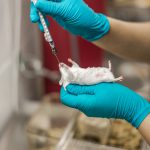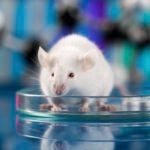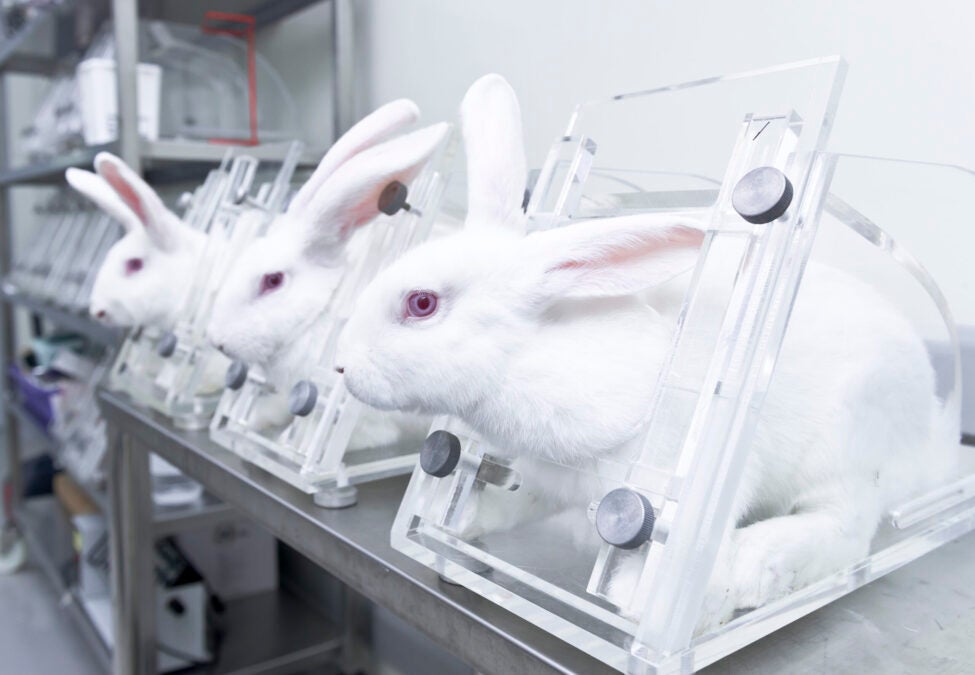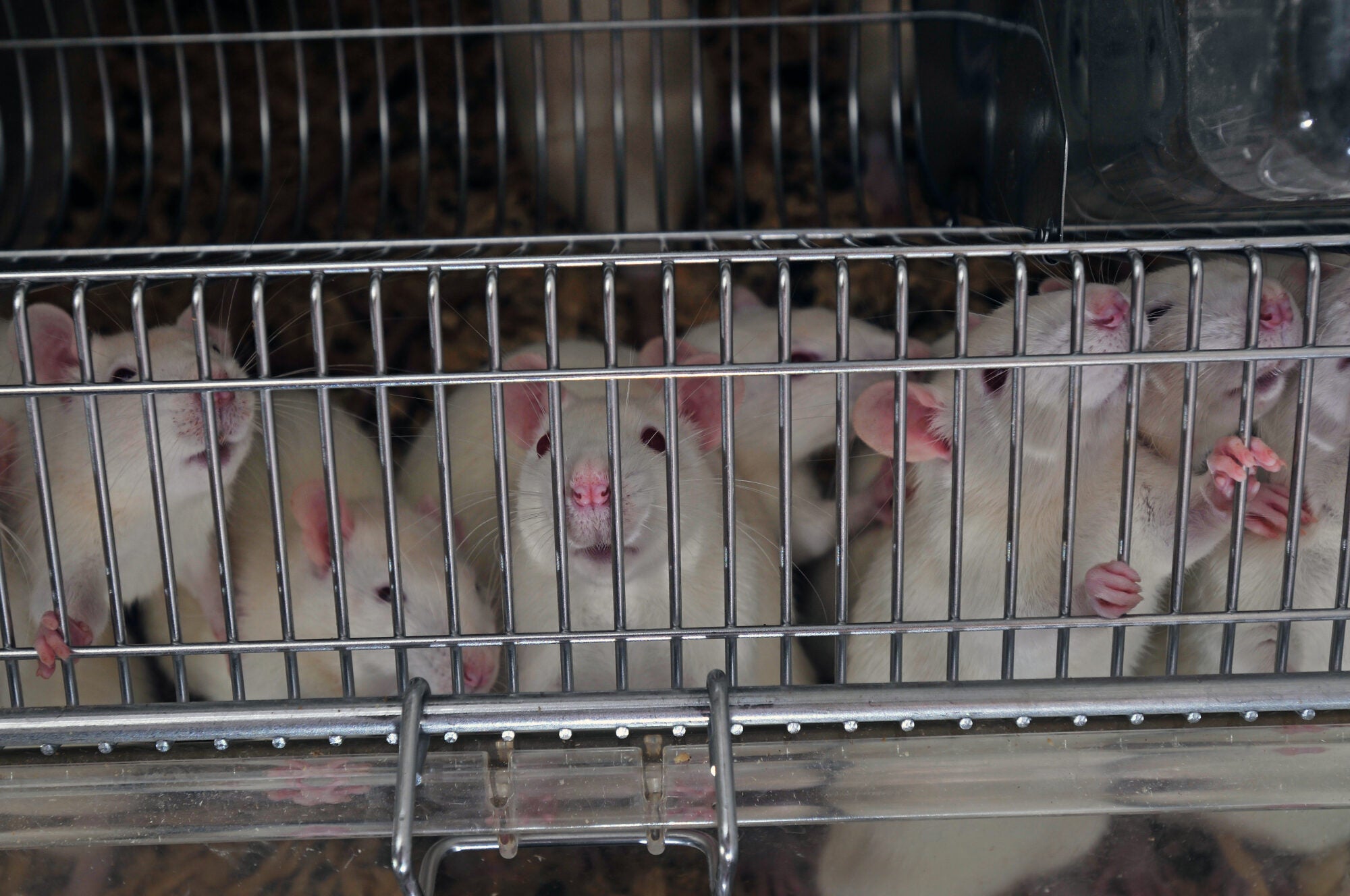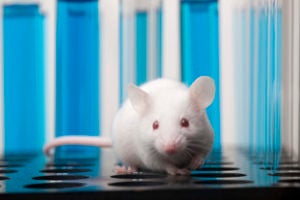
LONDON—Home Office statistics published today[1] reveal a shockingly high number of dogs, mice, cats, rabbits and other animals are still suffering in invasive, painful and sometimes lethal experiments in British laboratories despite unprecedented availability of high-tech and often more human-predictive non-animal approaches.
The Annual Statistics of Scientific Procedures on Living Animals, Great Britain 2018 show that a total of 3.52 million procedures were completed in the UK in 2018, including tests on mice (1.1 million), rats (170,665), birds (146,860), rabbits (11,159), guinea pigs (6,445), monkeys (3,207), dogs (4, 481), cats (159), horses (10,424) and fish (300,811). A total of 87,557 animals were subjected to severe suffering, the highest category allowed under the law.
Humane Society International Senior Scientist Dr Lindsay Marshall, who for 12 years managed a laboratory dedicated to animal-free research into respiratory diseases, said: “As a scientist myself, I know all too well the drawbacks of relying on animals to study and treat human disease. The fact is that animal models fail far more often than they succeed, so it’s hugely frustrating and worrying to see the UK, year after year, failing to move away from outdated animal experiments. It’s high time UK research funding bodies stopped squandering British taxpayer money and charitable donations on dead-end research, and made a serious investment in human organoids, organs-on-a-chip, computerised systems biology models, and other advanced, non-animal technologies that are the true future of modern medical research.”
The government made a commitment in 2010 to reduce animals used in scientific research, but almost 10 years after this declaration of intent[2], the UK remains one of the highest lab animal users in Europe. In those same years, non-animal technologies that can produce faster, cheaper and more human-relevant results, have advanced enormously:
- Computers are much better than animals at predicting possible toxic effects of chemicals and drugs[3].
- The discovery of induced pluripotent stem cells has helped to remove the ethical barriers to stem cell use[4].
- Scientists have created human-mimetic systems of almost every organ in the body. There is a human-on-a-chip for drug testing[5], a patient-on-a-chip is not far away[6] and chips have travelled to space to investigate the impact of ageing on the human body[7].
Dr Marshall is not alone in her opinion. A raft of academic reviews from expert scientists in a range of fields reach the same conclusion for conditions as diverse as autism, cardiovascular disease, liver disease, diabetes, and Alzheimer’s disease[8] and they call for more investment in human-relevant methods.
Dr Marshall continues: “Despite staggering advances in scientific technology, medical research in Britain remains irrationally wedded to broken animal models. If our government is truly committed to advancing medical progress for its citizens, and to reducing the use of animals in laboratories, significant funding must be redirected from animals to human-mimetic approaches, rather than the paltry 3% of the UK annual research spend that non-animal methods receive at present.”
The recent closure of two mouse breeding facilities[9] illustrates the growing recognition within the scientific community that a paradigm shift away from animal use is essential for medical progress. Recognition that fewer animals are required due to a “rise in the use of alternative technologies”[10] is a step in the right direction, yet the Home Office animal use statistics indicate that there is much more work required to reduce the body count.
Facts:
- Despite the ever-increasing growth in animal procedures, there is no corresponding increase in the number of human medicines making it to the clinic. In recent years, both the European Medicines Agency and US Food and Drug Administration approved fewer new drugs than they had been approving earlier in the decade.
- Most animal models are poor predictors of human response, with over 90% of new candidate drugs never making it to patients. That’s because pharmaceutical compounds that appear ‘safe’ and ‘effective’ in animal trials fail to deliver the same result when given to people; 55% do not effectively treat the condition for which they are intended, and almost 30% show signs of toxicity that were not seen in animal tests[11].
- Advances in gene sequencing and phenotypic analysis in humans is ushering in the era of precision medicine, and focused funding and efforts on human-relevant technologies like these are more likely to provide disease understanding and much-needed new treatments.
- Nearly 560,000 experiments in 2018 were deemed to have caused moderate or severe suffering to animals. Moderate suffering is described by the Home Office as causing short term moderate pain or distress to animals while severe suffering causes long-lasting extreme pain or distress.
ENDS
Contact: Dr Lindsay Marshall, 07719 531 675, lmarshall@hsi.org
Notes to editors:
- 2018 Home Office statistics: https://assets.publishing.service.gov.uk/government/uploads/system/uploads/attachment_data/file/818578/annual-statistics-scientific-procedures-living-animals-2018.pdf
- https://publications.parliament.uk/pa/cm201011/cmhansrd/cm110718/wmstext/110718m0001.htm
- Passini, et al. 2017 Human In Silico Drug Trials Demonstrate Higher Accuracy than Animal Models in Predicting Clinical Pro-Arrhythmic Cardiotoxicity. Front Physiol.8:668.
Luechtefeld et al. 2018 Machine learning of toxicological big data enables read-across structure activity relationships (RASAR) outperforming animal test reproducibility. Toxicological Sciences. 165 1, 1 September 2018: 198-212 - https://www.eurostemcell.org/ips-cells-and-reprogramming-turn-any-cell-body-stem-cell
- https://hesperosinc.com
- Edington et al. (2018) Interconnected Microphysiological Systems for Quantitative Biology and Pharmacology Studies. Sci Rep. 2018 Mar 14;8(1):4530. doi: 10.1038/s41598-018-22749-0
- https://ncats.nih.gov/tissuechip/projects/space
- Savoji, et al. 2018 Cardiovascular Disease Models: A Game Changing Paradigm in Drug Discovery and Screening. Biomaterials. 10.1016/j.biomaterials.2018.09.036
Boeckmans et al. 2018. Human-based systems: Mechanistic NASH modelling just around the corner? Pharmacol Res. 134:257-267. 10.1016/j.phrs.2018.06.029
Muotri, A. R. 2016. The Human Model: Changing Focus on Autism Research. Biol Psychiatry. 79;8: 642-9.
Bowman, et al. 2018. Future Roadmaps for Precision Medicine Applied to Diabetes: Rising to the Challenge of Heterogeneity. Journal of Diabetes Research. 10.1155/2018/3061620
Clerc, et al. 2016. A look into the future of ALS research. Drug Discov Today. 21;6: 939-49 - https://www.sanger.ac.uk/news/view/sanger-institute-animal-research-facility-close
https://www.nature.com/articles/d41586-019-02002-y - https://chemicalwatch.com/77872/sanger-institute-announces-closure-of-animal-research-facility
- https://ntp.niehs.nih.gov/iccvam/meetings/iccvam-forum-2019/06-lee-ncats_508.pdf

